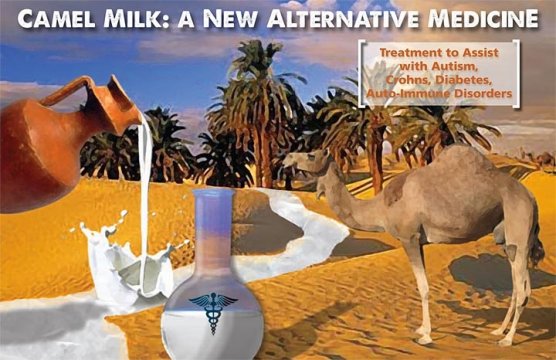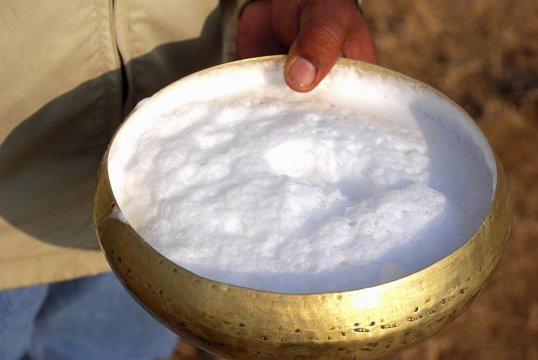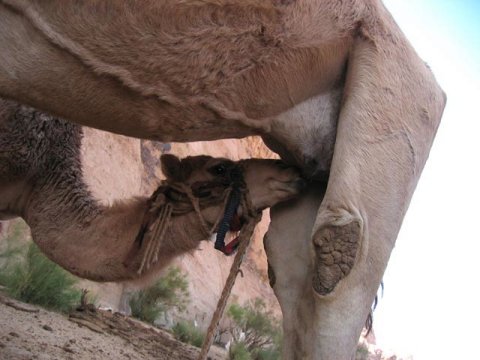|
John Tyman's Cultures in Context Series EGYPT and the SAHARA www.johntyman.com/sahara |
|
4.4 Foodstuffs and Diets : 263-270 |
| . |
|
John Tyman's Cultures in Context Series EGYPT and the SAHARA www.johntyman.com/sahara |
|
4.4 Foodstuffs and Diets : 263-270 |
| . |
 |
| .263. The Western image of the camel is of a pack animal crossing the desert in a caravan, nose to tail: but most of the camels herded by Bedouin have always been females kept for milk. These drifted like sheep in herds of between 50 and 100 camels from one patch of scrub to the next, with the 3 or 4 tents of a father, his sons and their womenfolk. (English language promotion of the health value of camelís milk courtesy: camelmilkforhealth.com) |
 |
| .264. Camelís milk was the basis of Bedouin diet -- warm and frothy when drunk straight from the udder, or kept for a little while and lightly curdled. While the ability of camels to go without drinking for weeks at a time is impressive, of greater significance is their ability to convert scrubby vegetation and undrinkable brackish water into milk -- top quality human nutrition -- almost year-round. (Fresh camelís milk courtesy: camelcharisma) |
 |
| .269. The women milk their animals every morning and evening, and those with sheep and goats also make butter and cheese. A female camel can suckle her young and also provide 4 or 5 litres of milk each day for 11 months of the year, but camelís milk is of no use in making butter since it has no cream. Camels do not need to be herded like sheep or goats, but will return of their own accord to be watered and milked by their owners. (Young camel nursing courtesy: jordanjubiliee.com) |

![]()
Text and photos by John Tyman
unless otherwise indicated.
Intended for Educational Use
Only.
Contact Dr. John Tyman at johntyman2@gmail.com
for more information regarding
licensing.
![]()
www.hillmanweb.com
Photo processing, Web page layout,
formatting and hosting by
William
Hillman ~ Brandon, Manitoba ~ Canada